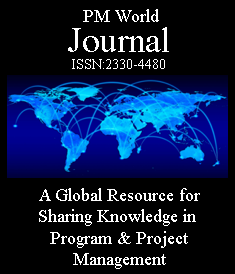Elevates Project Management
ADVISORY ARTICLE
By Madison Lundquist
Principal Research Lead
Process and Performance Management
APQC
Texas, USA
You’ve scoped a high-stakes project with a detailed project plan and mapped out deliverables, timelines, and resources. But a few weeks in, deliverables are off track, content is scattered, and teams are improvising on how work is getting done. The result: Confusion, inconsistencies, and delays. What went wrong? The answer might lie in your organization’s process maturity.
Project and process management are often treated as two separate domains. In reality, every project is a bundle of processes arranged in a work breakdown structure (WBS), and the maturity of those processes can make or break project outcomes.
This article explores how embedding process thinking into project management strengthens delivery, reduces risks, and connects project outputs to organizational performance.
How Processes Can Improve Projects
Many people view projects and processes very differently—while projects might be seen as dynamic and creative, processes are sometimes thought of as rigid and repetitive. But the truth is that every successful project implementation depends on processes.
Project Management versus Execution
It helps to think of project-related processes in two categories: those that facilitate project management, and those that are required for project execution:
-
- Project management processes focus on an organization’s overall governance and systematic approach to managing projects, programs, and portfolios.
- Project execution occurs in processes specific to certain stages along the project timeline such as research, design, risk analysis, and content management.
For example, suppose your company is developing a new human resource management system (HRMS). The project management activities would incorporate activities like project scoping and planning. You might use a project management platform such as Asana, Jira, or Trello to establish resource dependencies and map timelines. The execution activities would focus on project-specific processes including software development and HR processes such as payroll, benefits, and onboarding.
The PM’s Process Toolkit
So how can organizations design their project plans to better leverage process management methodology? The two categories, project management and execution, each contain helpful tools for project managers (PMs):
More…
To read entire article, click here
How to cite this article: Lundquist, M. (2025). Bridging the Gap: How Process Thinking Elevates Project Management, PM World Journal, Vol. XIV, Issue XI, November. Available online at https://pmworldlibrary.net/wp-content/uploads/2025/10/pmwj158-Nov2025-Lundquist-Bridging-the-Gap-advisory.pdf
About the Author

Madison Lundquist
Texas, USA
![]()
As Principal Research Lead, Madison Lundquist develops and executes APQC’s research agenda for process and performance management and serves as subject matter expert. She interviews leading organizations on their practices, identifies key findings from the research projects, and shares the approaches and best practices organizations use to manage process, improve organizational agility, and continuously improve.
Email: mlundquist@apqc.org | Web: www.apqc.org









